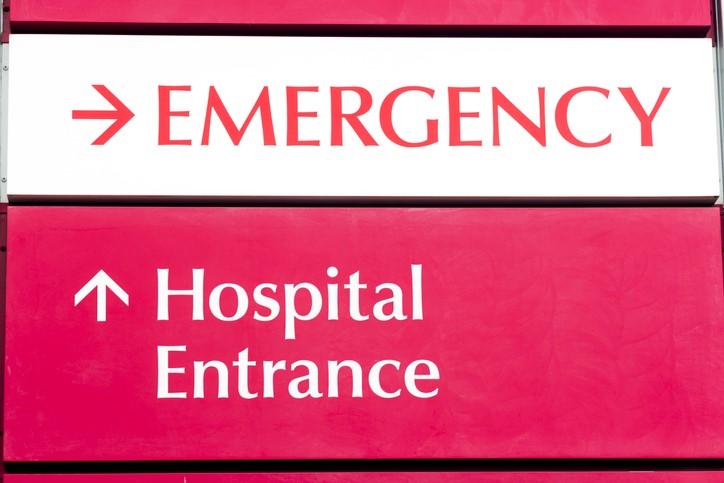
Hospitals and front-line physicians live at the interface of life and death where real-world facts beyond the immediate care setting control their lives and those of the individuals they care for. These facts often do not line up nicely with the over-simplification and sometimes outright myth that form the basis of much health-care policy. Beliefs and myths define our perspective, and perspective changes how we interpret and apply evidence --- changing the lives of those who deliver care and those who just want to get well. Policy has consequences.
On Christmas day 2018, the Journal of the American Medical Association published research with an accompanying editorial showing a statistically significant increase in mortality resulting from the Hospital Readmission Reduction Program. This Centers for Medicare & Medicaid Services initiative began in 2010 and was intended to reduce readmission to the hospital within 30 days of discharge for patients admitted for acute heart attack, heart failure or pneumonia.
The program worked by penalizing hospitals that did not meet the program’s criteria by readmitting too many patients with targeted diagnoses. The impact on hospitals was significant. In 2018, 80 percent of hospitals subject to the program were penalized. The resulting payment reduction totaled $564 million. And the published research showed a more important human cost in lives. It’s not hard to see why.
The targeted diagnoses identified patients with a higher risk of necessary hospitalization and death. The fact that the intervention followed a hospitalization meant their risk of future events was yet higher.
The study shows that physicians and hospitals tried to meet patient needs by taking steps short of re-hospitalization. Patients were given more, and longer emergency room visits or short-term in-hospital observation. But these are not the equivalent of an in-patient admission when that is necessary.
There are many reasons why sick patients, already at risk for death and re-hospitalization would need to be readmitted. Many of these reasons are not controlled by the hospital or outpatient physicians. Patients live in a wide variety of social and physical environments; all have a wide array of situations and beliefs. Incentives like these are destined to create unintended consequences. Why would anyone believe penalizing any single part of the health-care system for things outside its control is good policy?
This points to the reality that health care, like everything else, is part of a community where everything is interconnected. We can’t fix parts in isolation and expect to predict how the system will respond and what will result. Not only was the Hospital Readmission Reduction Program focused on just a piece of a bigger problem, it was built around a secondary phenomenon, readmission.
Which raises another important question, why are we creating incentives around secondary phenomena? At the core of all of this is the patient. Healthy people need less health care. Healthy people are more productive and better able to pay for health care. Strategy and tactics to achieve secondary ends will produce secondary effects.
The answer is that strategies and goals must align around health care’s primary purpose, the health of the patient. This doesn’t mean we ignore financial considerations -- but making finance the primary concern will achieve better financial results at the expense of the patient’s health and will raise cost over the long term. Patient-centered strategic goals that reward better care within financial constraints have a better shot at controlling secondary cost.
Additionally, we must also recognize that sickness and health is happening in a community setting which is dominated by relationships and events flowing them. Working with parts in isolation and assuming they are in control of their larger environment is the exact opposite of reality.
The nature of the incentives we create and apply can reveal our purpose, healthy people in a healthy community. Healthy people in a healthy community will always be less expensive and create more value for those around them. Achieve that, and cost will fall.
To learn more about this subject, see The Unintended Consequences of Financially Engineered Healthcare.
Dr. Michael Rohwer is executive director of Curandi, a not-for-profit membership organization working to improve community health. He is a member of The Lund Report’s board of directors.
Comments
Hospital Readmission Reduction Program
Yes... you are right... for 2 reasons.
1. The purpose of healthcare is not to control the length of hospitalization, but to achive a desired outcome in a patient. The hospital has a critical role to play. The length of stay is important because it affects the resources required. Nonetheless, it can't be a primary point of incentive without distorting what healthcare is about.
2. A hospital is only part of a much larger self-organizing network we call community. When our car breaks, we can fix a single part and get back on the road. When a part of our human society breaks, fixing one part, only produces an adaptive response someplace else. The problems of healthcare are inter-connected with all our community problems. A focus on parts produces adaptation and new problems, often unseen because we don't look. This unintended consequence took 9 years to find.
Understanding the complex network we call community is the place to start. Network science has made huge and relevant advances in the last 2 decades. The answers are there if we step back and see the bigger picture
Mike Rohwer

A secondary negative impact that I saw during my husband's course of chronic illness was the hesitation to discharge until it was absolutely sure that a readmission was not necessary. This longer hospitalization is not always good if it is clear that the patient has good followup and will return if needed.